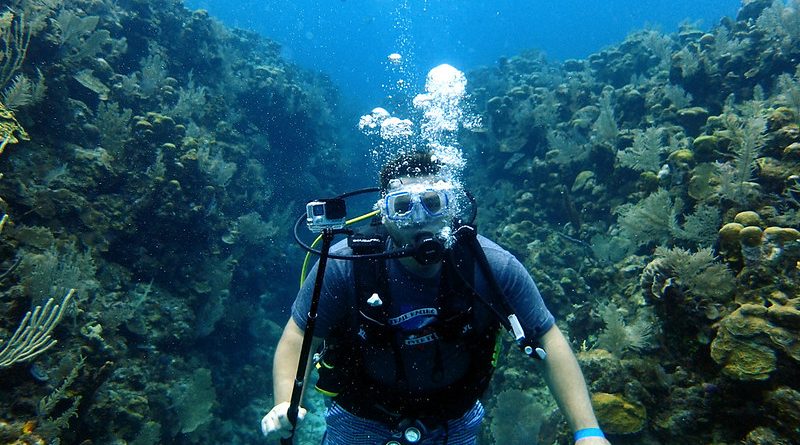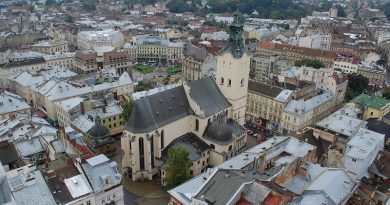Diving in Honduras
When in need of some serious beach action, look no further than the Bay Islands (Islas de la Bahia), Honduras’ foremost tourist attraction. The chain of seventy or so islands, rising in a half moon above the Honduran north coast and ringed by sandy beaches lapped by the tranquil, glassy waters of the Caribbean, offer world class yet cheap opportunities for scuba diving.
So far tourist development has centred on the three largest islands: Roatán, Guanaja and Utila. Roatán is the most developed of the three, Guanaja is a resort destination for those with cash-lined pockets while Utila attracts the backpacking crowd.
Roatán
Roatán is the original Honduran paradise destination. The palm decked beaches and sapphire waters beckon you to the shoreline and beyond while the interior is a tropical sensation with its hills and dense areas of untouched jungle.
Most people come here to dive, dive, dive – and all budgets are well-catered for. There are dive and resort shops across the island. The fact that Roatán is geared to diving makes it a great place to learn the sport because the competition keeps safety standards good and prices reasonable (but not as low as Utila). Once you’re qualified, popular dive sites include ‘West End Wall’ (a deep dive full of large corals, sponges and fish, including rays), ‘Doc’s Elbow’ (a night dive site where you can witness octopi, crabs and lobsters) and ‘Barbareta Wall’ (an uninhabited island offering many uncharted reefs and abundant sea life).
Development on Roatán has remained on the right side of understated yet still manages to provide the visitor with a good range of accommodation choices and locations. There are six settlements connected by an unkempt ‘highway’ including Sandy Bay where you can visit several nature attractions like the dolphin program at the Roatán Institute for Marine Sciences and the Tropical Treasures Bird Park. West End is crammed with restaurants – many serving up the very fish that people have spent the day viewing! Popular ‘gringo’ (foreigner) hotspots are Salt and Peppers which does great fish and chips, Eagle rays with barbecue and live music and Cannibal Café specialising in Mexican fare. Accommodation on the island ranges from the cheap (around $10 per night) to the very comfortable and exclusive (well over $100 per night).
Guanaja
For tranquillity and beauty with comfort to boot Guanaja is the place to go for those with more money to spend. Apart from a handful of resorts, the island is an eruption of jungle-covered mountains and nothing else. There are no roads and all transport is by water-taxi. Indeed, the main settlement, the small town of Bonacca, isn’t even on dry land – it’s built on stilts about 250 yards offshore.
The dive sites surrounding Guanaja are a joy for experienced divers – caves, canyons and swim-through breaks in the rocks are all here to be explored. The coral formations are reputedly the best that the Bay Islands have to offer and this makes up for the fact that there appear to be fewer fish here than around Roatán and Utila. That said, you’re still likely to see rays, snappers and groupers on any dive.
If the sea isn’t the only thing you want to be immersed in on your holiday, take a water taxi over to Bonacca for a cultural fix. Basically a fishing community but lacking most of the conveniences you’d expect of a town housing several thousand people, it’s a laid back place with colourful houses, churches for every persuasion from Mormons to 7th Day Adventists and busy streets winding around canals brimming over with dug-out canoes. There are several local taverns and dance-halls that are safe enough to visit at night too.
Utila
The least developed of the Bay Islands, it is also arguably the best value. Cheap prices and an enticing range of diving opportunities make it the choice of budget travellers and hardcore underwater enthusiasts alike. But a cultural experience it is not. If diving, drinking, diving, drinking (with fellow foreigners) is right up your alley (think of a less developed version of Koh Tao in Thailand) then this is definitely the place for you. Otherwise, pay extra and go to Roatán.
The reefs around the island boast pristine coral and abound with life. For more experienced divers the north of the island has some vertigo inducing drop-offs where you can watch a bustling community of life that includes turtles, sharks, moray eels and sting rays. Underwater mountains abut Utila’s coastline. The ‘Black Hills’ site is a firm favourite. Divers drop down next to the coral encrusted hilltop and are literally engulfed in schools of fish – as well as encountering the odd (harmless) nurse shark. But perhaps the biggest draw Utila has to offer is the chance to swim with the whale shark and be awed by the magnificence of the world’s largest fish (it can grow up to 48 feet long).
Life is centred around Utila Town – because it’s the only settlement on the island. Its narrow streets are lined with dive shops as well as with the usual backpacker fare of guesthouses (generally good and cheap, ranging from $10 to $25 for a double room with electricity and fan), taverns and trinket stores. Here, once you’re sick of the sea (which may well never happen) you can kick back and enjoy the town’s friendly, party atmosphere or turn your sights inland and walk the trails to the Ironshores volcanic hills or Pumpkin Hill which affords lovely views across to Roatán.
When to go
The rainy season from September to February hits the Bay Islands particularly hard although it can rain on the Caribbean coast at any time of the year. The peak travel period falls in March, April, July and August. The optimum months to visit are either side of this time in March and September.
Getting there
Inside Honduras La Ceiba is the best place for transport connections to the islands. Air and boat services run to both Utila and Roatán; air travel is the only way to get to Guanaja. It’s also possible to fly to Utila and Roatán from San Pedro Tula and Tegucigalpa and internationally from Belize City, San Salvador and Houston and Miami in the USA once a week.
And one last thing..
The islands are home to some pretty tenacious flying insects. Sand flies don’t carry any diseases to worry about but they’re everywhere and will bite at any opportunity leaving unsuspecting visitors covered in swollen, itchy bites that could seriously dampen holiday fun. Malaria, carried by mosquitoes, is also a risk here according to the Centers for Disease Control (http://www.cdc.gov). Honduras
To avoid bug bites use repellent and cover up at dusk and dawn when the bugs are at their most active. If you still get bitten treat the itching with antihistamine tablets or cream.




